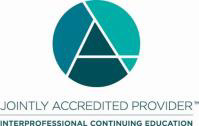WMJ Vol 119: Changes in Alcohol Use Patterns in the United States During COVID-19 Pandemic
ABSTRACT
Introduction: The novel coronavirus SARS-CoV-2 (COVID-19) has rapidly emerged as a public health emergency. In the United States, “stay-at-home” orders have led to loss of social routines and the closing of restaurants and bars; as a result, sales of alcohol have increased. The aim of this study was to assess changes in alcohol use patterns as a result of social distancing measures.
Methods: A single online survey was sent to a convenience sample of adults through social media. Self-reported demographics and alcohol use patterns before and during social distancing were obtained.
Results: Four hundred seventeen subjects completed the survey; 83% were women, 77% were married, 44% were between ages 35 and 44 years. Alcohol Use Disorders Identification Test (AUDIT-C) scores increased from median value of 3 to 4 (P < 0.0001); the increase was statistically significant only in women (P <0.0001). Fewer people use alcohol during social distancing; however, in those who use alcohol, the frequency and quantity ingested increased, as well as the frequency of alcohol use prior to 5 pm. Despite these increases, there was an overall reduction in binge drinking pattern. Multivariate analysis identified women, having children at home, and a history of substance abuse to be associated with increase in alcohol use.
Conclusion: Among those who continue to drink alcohol, social distancing has led to a significant increase in the amount of alcohol ingested, frequency of alcohol use, and an increase in AUDIT-C scores in women suggesting hazardous alcohol use behaviors. Clinicians should continue to assess patient alcohol use during the pandemic. Further studies will be needed to assess long-term outcomes after the COVID-19 pandemic resolves.
Intended Audience
The target audience for this journal-based activity is healthcare providers caring for the people and communities of Wisconsin and beyond.
Learning Objectives
As a result of this journal-based activity, learners will be able to:
- Describe the data collected using AUDIT-C to identify those at risk for alcohol use during the COVID-19 pandemic.
- Describe the unique factors to the COVID-19 pandemic that may lead to higher risk for alcohol misuse among women.
- Differentiate harmful drinking in women and men and recognize that >2 drinks per day may be harmful for women.
FACULTY DISCLOSURE
It is the policy of the University of Wisconsin–Madison ICEP that the faculty, authors, planners, and other persons who may influence content of this CE activity disclose all relevant financial relationships with commercial interests* in order to allow CE staff to identify and resolve any potential conflicts of interest. Faculty must also disclose any planned discussions of unlabeled/unapproved uses of drugs or devices during the educational activity. For this educational activity all conflicts of interests have been resolved and detailed disclosures are listed below:
| Name of Individual | Individual's Role in Activity | Name of Commercial Interest & | Discussion of |
| Elizabeth Bade, MD | Reviewer | No Relevant Financial Relationships to Disclose | No |
| Terese Bailey, BS | Accreditation Specialist | No Relevant Financial Relationships to Disclose | No |
| Nicole Boschuetz, MD | Author | No Relevant Financial Relationships to Disclose | No |
| Shanna Cheng, MD | Author | No Relevant Financial Relationships to Disclose | No |
| David Dwyer, PhD, RN, NE-BC | Reviewer | University of Wisconsin-Madison (Employment); Eskenazi Health (Spouse/Partner: Employment); Mayo Clinic (Spouse/Partner: Employment); Indiana University (Spouse/Partner: Grant) | No |
| Veronica Loy, MD | Author | No Relevant Financial Relationships to Disclose | No |
| Ling Mei, MD | Author | No Relevant Financial Relationships to Disclose | No |
| Roberta Pawlak, PhD, RN, NEA-BC | Reviewer | No Relevant Financial Relationships to Disclose | No |
| Alexander Scharko, MD | Editor | Wisconsin Lutheran Child and Family Services (Contractor) | No |
| Robert Treat, PhD | Reviewer | No Relevant Financial Relationships to Disclose | No |
* The ACCME defines a commercial interest as any entity producing, marketing, re-selling, or distributing health care goods or services consumed by, or used on, patients. The ACCME does not consider providers of clinical service directly to patients to be commercial interests.
Accreditation
Accreditation Statement
 | In support of improving patient care, this activity has been planned and implemented by the University of Wisconsin–Madison ICEP and the Wisconsin Medical Journal. The University of Wisconsin–Madison ICEP is jointly accredited by the Accreditation Council for Continuing Medical Education (ACCME), the Accreditation Council for Pharmacy Education (ACPE), and the American Nurses Credentialing Center (ANCC), to provide continuing education for the healthcare team. |
Credit Designation Statements
American Medical Association (AMA)
The University of Wisconsin–Madison ICEP designates this journal-based CE activity for a maximum of 1.0 AMA PRA Category 1 Credit™. Physicians should claim only the credit commensurate with the extent of their participation in the activity.
American Nurses Credentialing Center (ANCC)
The University of Wisconsin–Madison ICEP designates this journal-based CE activity for a maximum of 1.0 ANCC contact hour.
Iowa Board of Nursing accepts ANCC contact hours for nursing continuing education requirements.
Continuing Education Units
The University of Wisconsin–Madison ICEP, as a member of the University Professional & Continuing Education Association (UPCEA), authorizes this program for 0.1 continuing education units (CEUs) or 1 hour.
Available Credit
- 1.00 AMA PRA Category 1 Credit™
- 1.00 ANCC Contact Hours
- 1.00 University of Wisconsin–Madison Continuing Education Hours
- 1.00 Approved for AMA PRA Category 1 Credit™
Required Hardware/software
Free, current version of Chrome, Firefox, Safari, or Edge. Some older browsers and Microsoft Internet Explorer could produce error messages or not display the content correctly.
Free, current version of Adobe Acrobat Reader or other .pdf reader.

 Facebook
Facebook X
X LinkedIn
LinkedIn Forward
Forward